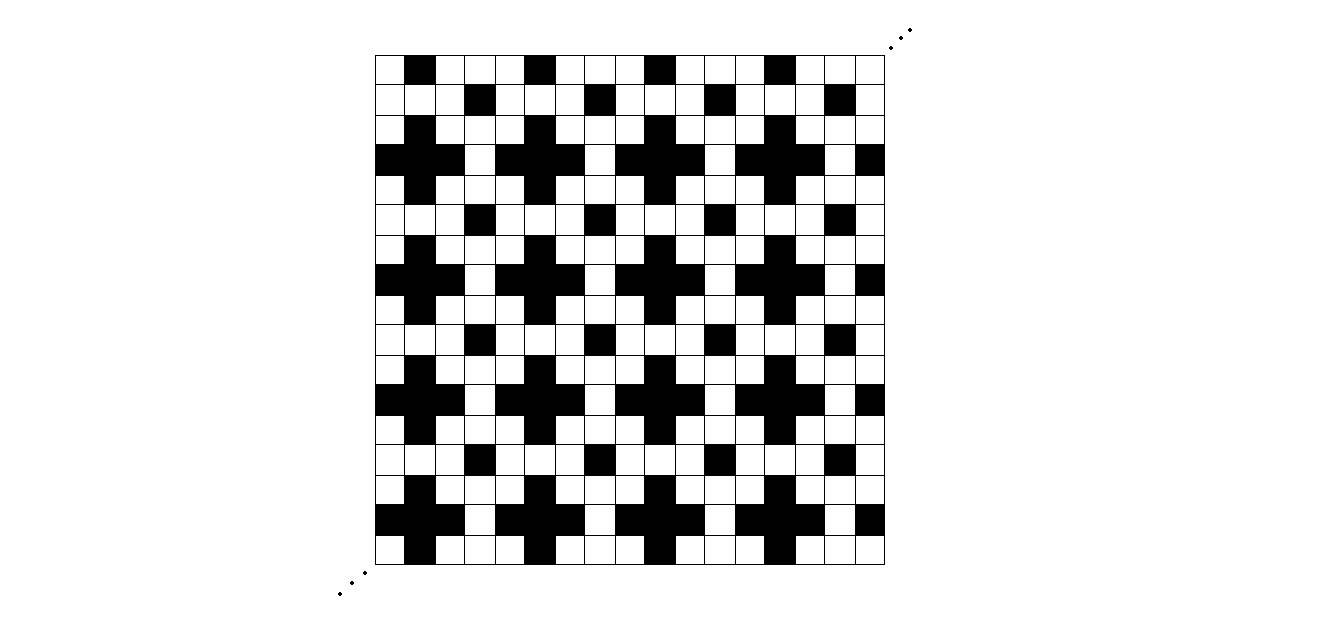Grid & Crosses

As shown above, a grid, composed of multiple square units, is constructed such that any distance of the vertical and horizontal white connecting squares equals units, alternating with the black centers and crosses. This pattern continues and expands endlessly.
If one square is picked randomly from this grid, what is the absolute difference between the probability of obtaining a white unit and that of a black one?
If your answer is in a form of for co-prime integers, enter as the solution.
The answer is 5.
This section requires Javascript.
You are seeing this because something didn't load right. We suggest you, (a) try
refreshing the page, (b) enabling javascript if it is disabled on your browser and,
finally, (c)
loading the
non-javascript version of this page
. We're sorry about the hassle.
When analyzing this grid deliberately, we can see that it is created from multiple building blocks of congruent 4 × 4 squares unit, as depicted with the red margin, and in each of this larger unit, there are 6 black squares and 1 0 white squares.
Hence, with large n units of these, the probability of obtaining a white square = n → ∞ lim 1 6 n 1 0 n = 8 5 .
Similarly, the probability of obtaining a black square = n → ∞ lim 1 6 n 6 n = 8 3 .
Thus, the difference between these probabilities = 8 5 − 8 3 = 8 2 = 4 1 .